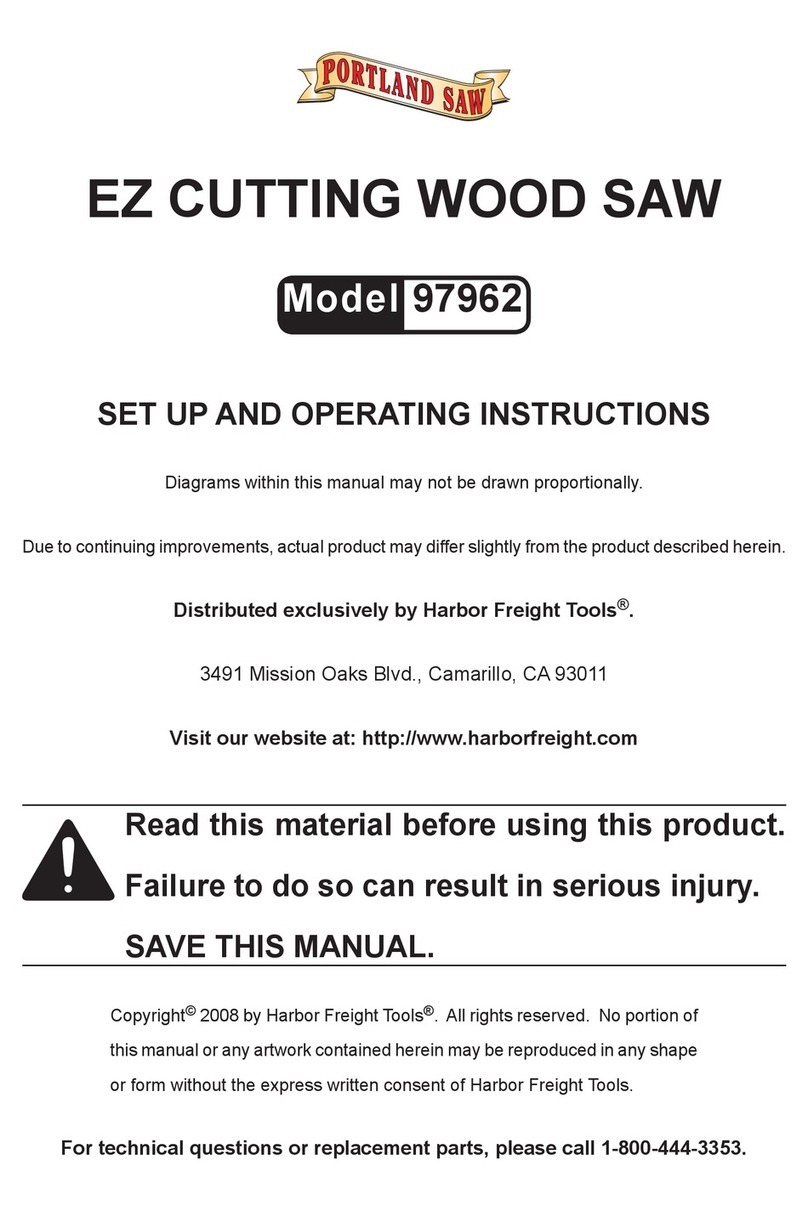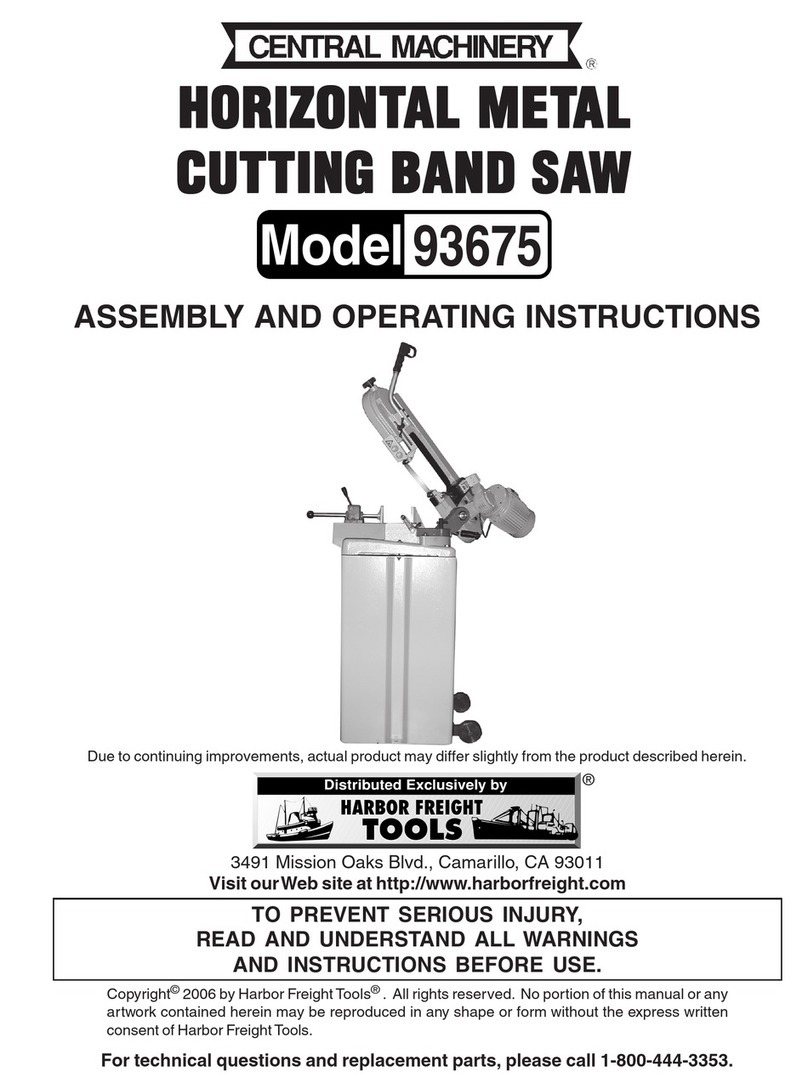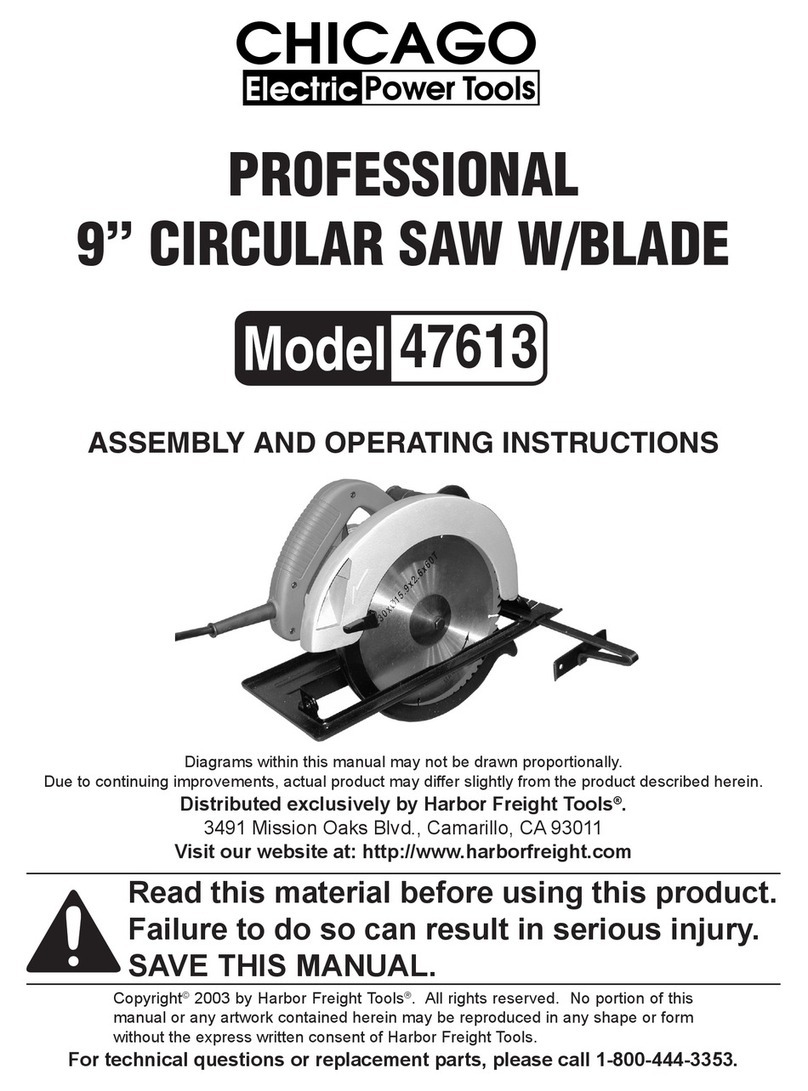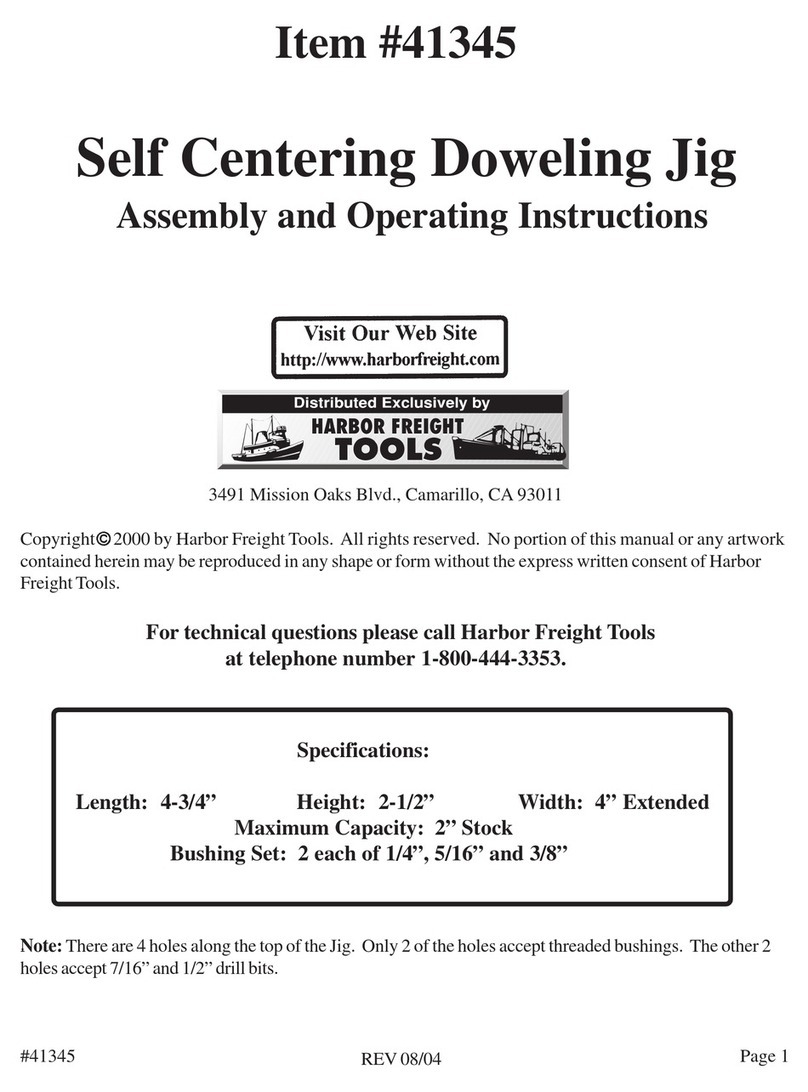
Page 5For technical questions, please call 1-888-866-5797.Item 93762
SAFETYOPERATIONMAINTENANCE SETUP
12. Before using the Band Saw, check to
make sure the Saw Blade is properly
mounted and is not cracked or bent.
13. Never attempt to cut more than
one workpiece at a time.
14. Never attempt to cut freehand. Make sure the
workpiece to be cut is pressed firmly against
the Table and/or secured in the Vise.
15. When cutting a large workpiece, make sure
its entire length is properly supported. If
necessary, use a roller stand (not included).
16. Do not lean on the Band Saw when
the tool is in its upright position.
17. When moving the Band Saw, always have its
Head lowered to its horizontal position and the
Locking Pin (116) inserted in the Pivot (121).
18. Allow the Saw Blade to rotate to full speed
before feeding a workpiece into the Blade.
When turning off the Band Saw, allow the Saw
Blade to spin down and stop on its own. Do
not press against the Saw Blade to stop it.
19. Wear heavy-duty work gloves when
changing the Saw Blade.
20. Turn off the Band Saw and allow the Saw
Blade to completely stop if the Saw Blade is
to be backed out of an uncompleted cut.
21. Use indoors only.
22. If the teeth of the Saw Blade are so far apart that
they straddle the workpiece, severe damage to
the workpiece and/or Saw Blade will result.
23. The use of accessories or attachments not
recommended by the manufacturer may
result in a risk of injury to persons.
24. When servicing use only identical replacement parts.
25. Only use safety equipment that has been approved
by an appropriate standards agency. Unapproved
safety equipment may not provide adequate
protection. Eye protection must be ANSI-approved
and breathing protection must be NIOSH-approved
for the specific hazards in the work area.
26. Stay alert, watch what you are doing and use
common sense when operating a power tool.
Do not use a power tool while you are tired or
under the influence of drugs, alcohol or medication.
A moment of inattention while operating power
tools may result in serious personal injury.
27. Industrial applications must follow OSHA guidelines.
28. Maintain labels and nameplates on the tool.
These carry important safety information.
If unreadable or missing, contact
Harbor Freight Tools for a replacement.
29. Avoid unintentional starting.
Prepare to begin work before turning on the tool.
30. People with pacemakers should consult their
physician(s) before use. Electromagnetic fields in
close proximity to heart pacemaker could cause
pacemaker interference or pacemaker failure. In
addition, people with pacemakers should:
• Avoid operating alone.
• Do not use with power switch locked on.
• Properly maintain and inspect to avoid electrical
shock.
• Any power cord must be properly
grounded. Ground Fault Circuit Interrupter
(GFCI) should also be implemented – it
prevents sustained electrical shock.
31. WARNING: Some dust created by power sanding,
sawing, grinding, drilling, and other construction
activities, contains chemicals known to the State
of California to cause cancer and birth defects or
other reproductive harm. Some examples of these
chemicals are:
• Lead from lead-based paints
• Crystalline silica from bricks and cement or other
masonry products
• Arsenic and chromium from chemically
treated lumber
Your risk from these exposures varies, depending
on how often you do this type of work. To reduce
your exposure to these chemicals: work in a well
ventilated area, and work with approved safety
equipment, such as those dust masks that are
specially designed to filter out microscopic particles.
(California Health & Safety Code § 25249.5, et seq.)
32. WARNING: The cord of this product contains
lead, a chemical known to the State of California
to cause cancer, and birth defects or other
reproductive harm. Wash hands after handling.
(California Health & Safety Code § 25249.5, et seq.)
33. The warnings, precautions, and instructions
discussed in this instruction manual cannot cover all
possible conditions and situations that may occur.
It must be understood by the operator that
common sense and caution are factors
which cannot be built into this product,
but must be supplied by the operator.

































